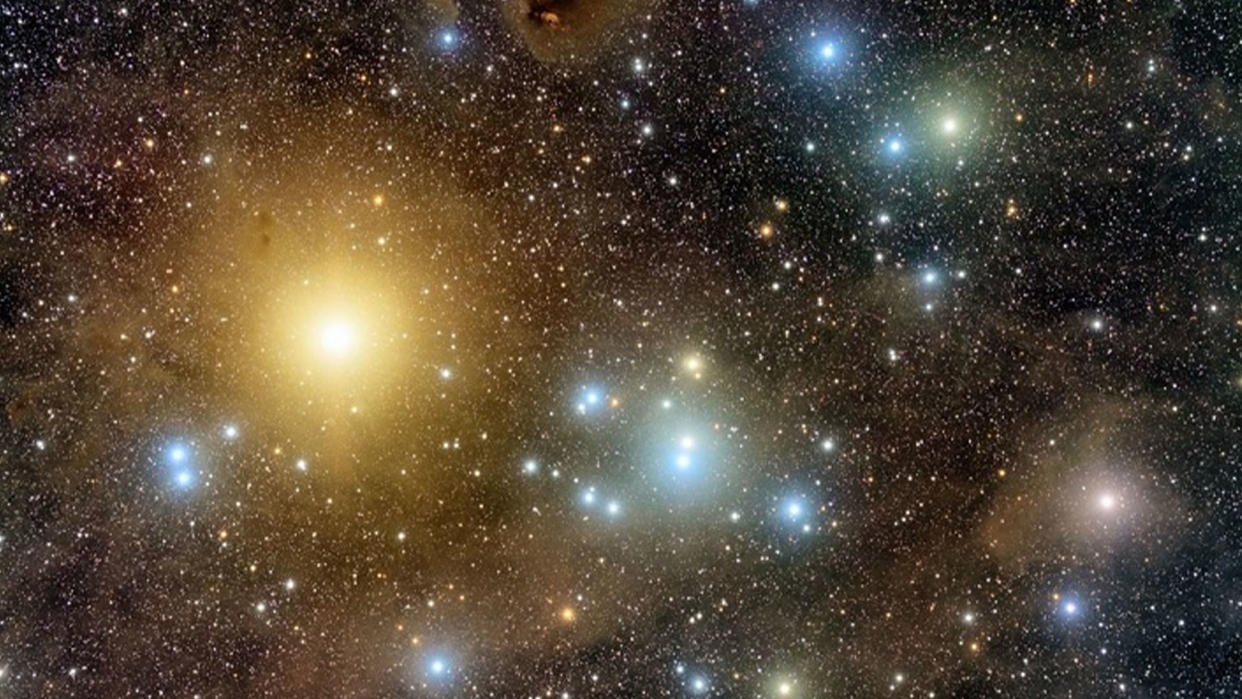The closest black holes to Earth may be 10 times closer than we thought

The closest black holes to Earth may have just gotten trillions of miles closer.
In new research published in the September issue of the journal Monthly Notices of the Royal Astronomical Society, a team of astronomers delved into the cosmic history of a nearby family of stars called the Hyades cluster — the closest star cluster to Earth, containing hundreds of stars sharing roughly the same ages, chemical compositions and movement patterns.
Using data from the European Space Agency's star-mapping Gaia satellite, the team simulated the past 650 million years of the star cluster's evolution. They found that the best explanation for the cluster's current star distribution hinges on the presence of at least two or three small black holes hidden in the Hyades' midst, subtly guiding the movements of the stars with their powerful gravitational influence.
"Our simulations can only simultaneously match the mass and size of the Hyades if some black holes are present at the center of the cluster today (or until recently)," lead study author Stefano Torniamenti, a postdoctoral researcher at the University of Padua in Italy, said in a statement.
If confirmed, these stealthy black holes would be the closest ones to Earth ever detected. Sitting only 150 light-years from our planet (about 900 trillion miles), these potential black holes are about 10 times closer to us than the next closest candidate — the peculiar star-orbiting black hole Gaia BH1, located about 1,500 light-years away.
Related: Black holes keep 'burping up' stars they destroyed years earlier, and astronomers don't know why
The theorized black holes in the Hyades would all be stellar-mass black holes — the smallest type of black hole observed by scientists, measuring from about five to 10 times the mass of the sun. When these black holes aren't actively feeding by drawing in matter from a brightly-glowing accretion disk, their diminutive size makes them virtually invisible.
One reliable way to find these humble black holes is by measuring their influence on the movements of nearby stars. So, in their new research, the team simulated the lifetime evolution of the Hyades cluster's 724 member stars over hundreds of millions of years. The team compared their simulated results to Gaia data on the known positions and velocities of the Hyades stars.
REALATED STORIES
—For the 1st time, scientists accidentally measure the swirling ring around a black hole
—Will the sun ever become a black hole?
—Do black holes really suck in matter?
The team found that, to reach their current state, the Hyades stars are almost certainly living under the gravitational influence of at least two stellar-mass black holes — or were until very recently. One scenario showed that the cluster may have lost its black holes as recently as 150 million years ago, after nearby supernova explosions sent the massive objects flying off into interstellar space. Even so, those runaway black holes would still be located relatively close to the cluster, and would still earn the title of closest black holes to Earth, the team added.
Because the black holes in question are neither large nor actively chowing down on matter (a process that usually results in bright flares of light visible far across the universe), confirming their existence beyond a doubt will be tricky. Models of star distribution like the ones used in this study are the best bet for now, the team concluded, and could be used to hunt for potential black holes in other star clusters close to Earth.

